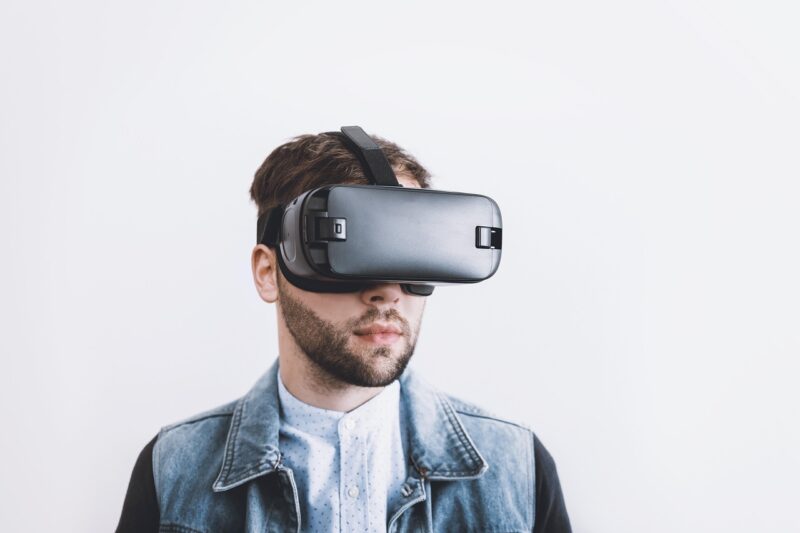From Pixels to Real Life: The Connection Between Video Games and Reality
November 17, 2024

Video games have evolved significantly since their inception. Once considered mere entertainment, they have forged deep connections with various aspects of real life, affecting everything from education and social interaction to mental health and professional development. This article delves into the intricate relationship between video games and reality, examining both the benefits and drawbacks of this captivating medium.
1. The Evolution of Video Games
nThe journey of video games began in the 1950s with simple graphics and rudimentary gameplay. As technology advanced, so did the complexity and creativity of video games. Today, we have immersive environments, rich storytelling, and characters with depth, offering experiences that can rival movies and books.
A brief timeline of crucial developments in video gaming:
- 1972: The launch of Pong, marking the birth of arcade gaming.
- 1985: The release of Super Mario Bros, introducing platforming elements and character-driven storylines.
- 1995: The advent of 3D graphics with titles like Quake and Tomb Raider.
- 2000s: Online multiplayer experiences with games like World of Warcraft shape communal gaming culture.
- 2010s to Present: The rise of virtual and augmented reality, pushing the limits of immersive experiences.
This evolution underscores how video games have become a significant part of modern culture, influencing how we engage with stories, challenges, and each other.
2. Video Games as Learning Tools
nThe potential of video games as educational tools has garnered attention from educators and psychologists alike. Games can transform learning by engaging students in interactive environments that enhance retention and critical thinking skills.
Some notable benefits of using video games in education include:
- Enhanced Engagement: Games capture attention better than traditional methods, motivating students to learn and explore.
- Critical Thinking: Many games require problem-solving and strategic thinking, fostering these skills in players.
- Social Skills: Multiplayer games promote collaboration, communication, and teamwork, crucial skills in the modern workplace.
Games like Minecraft, for example, have been used to teach subjects such as architecture, coding, and resource management, demonstrating that play can indeed be a powerful learning tool.
3. The Psychological Impact of Gaming
nThe relationship between video games and psychology is complex. While there are concerns about addiction and violent behavior associated with gaming, research also indicates several benefits:
- Stress Relief: Many players find games to be an effective way to decompress after a long day, providing an escape from reality.
- Improved Mood: Engaging in games can trigger the release of dopamine, the feel-good hormone, leading to improved emotional states.
- Cognitive Development: Certain genres, like puzzle and strategy games, challenge cognitive abilities and can enhance memory, attention, and spatial reasoning skills.
Gaming, when approached mindfully, can serve as a tool for personal growth and mental health improvement.
4. The Social Connection: Video Games and Community
nVideo games are not just solitary experiences; they foster connections among players across the globe. Multiplayer games offer social experiences that can lead to lasting friendships and communities.
Important aspects of social interaction in gaming include:
- Teamwork: Many games require players to work together to achieve common goals, fostering a sense of belonging and cooperation.
- Cultural Exchange: Online gaming communities often comprise players from different backgrounds, facilitating cross-cultural interactions and friendships.
- Support Networks: Gamers often form support networks, providing emotional support and camaraderie during challenging life moments.
Gaming communities can combat loneliness and create bonds that extend far beyond the screen.
5. The Double-Edged Sword of Video Game Addiction
nWhile there are many positives to gaming, it is essential to acknowledge that excessive gaming can lead to addiction and negative consequences. The World Health Organization has recognized gaming disorder as a mental health condition, emphasizing the need for balance in gaming habits. Signs of gaming addiction include:
- Neglecting Responsibilities: Failing to meet work, school, or social obligations due to gaming.
- Social Isolation: Preferring gaming over real-life social interactions.
- Escalating Time Investment: Spending increasing amounts of time gaming, often to the detriment of other activities.
Balancing gaming with other life aspects is crucial to prevent dependency and conduct a healthy gaming life.
6. Future Prospects: Video Games Shaping Real Life
nAs technology continues to advance, the impact of video games on real life will only grow. From augmented reality (AR) games like Pokémon GO, which encourage players to explore their physical surroundings, to virtual reality (VR) games that provide immersive experiences, the lines between gaming and reality are increasingly blurred.
The potential for gaming to influence industries such as healthcare, training, and tourism highlights its broadening scope. For example, medical professionals are utilizing VR for surgical training, showcasing how gaming technology can revolutionize traditional practices.
Conclusion
nThe relationship between video games and reality is multifaceted, encompassing educational benefits, psychological influences, social connections, and potential pitfalls. As gaming continues to evolve, so will its impact on our lives. Understanding this connection can help us harness the positive aspects of gaming while navigating its challenges. Ultimately, finding balance is key—both in gaming and life—allowing us to enjoy the immersive worlds of video games while grounding ourselves in reality.








